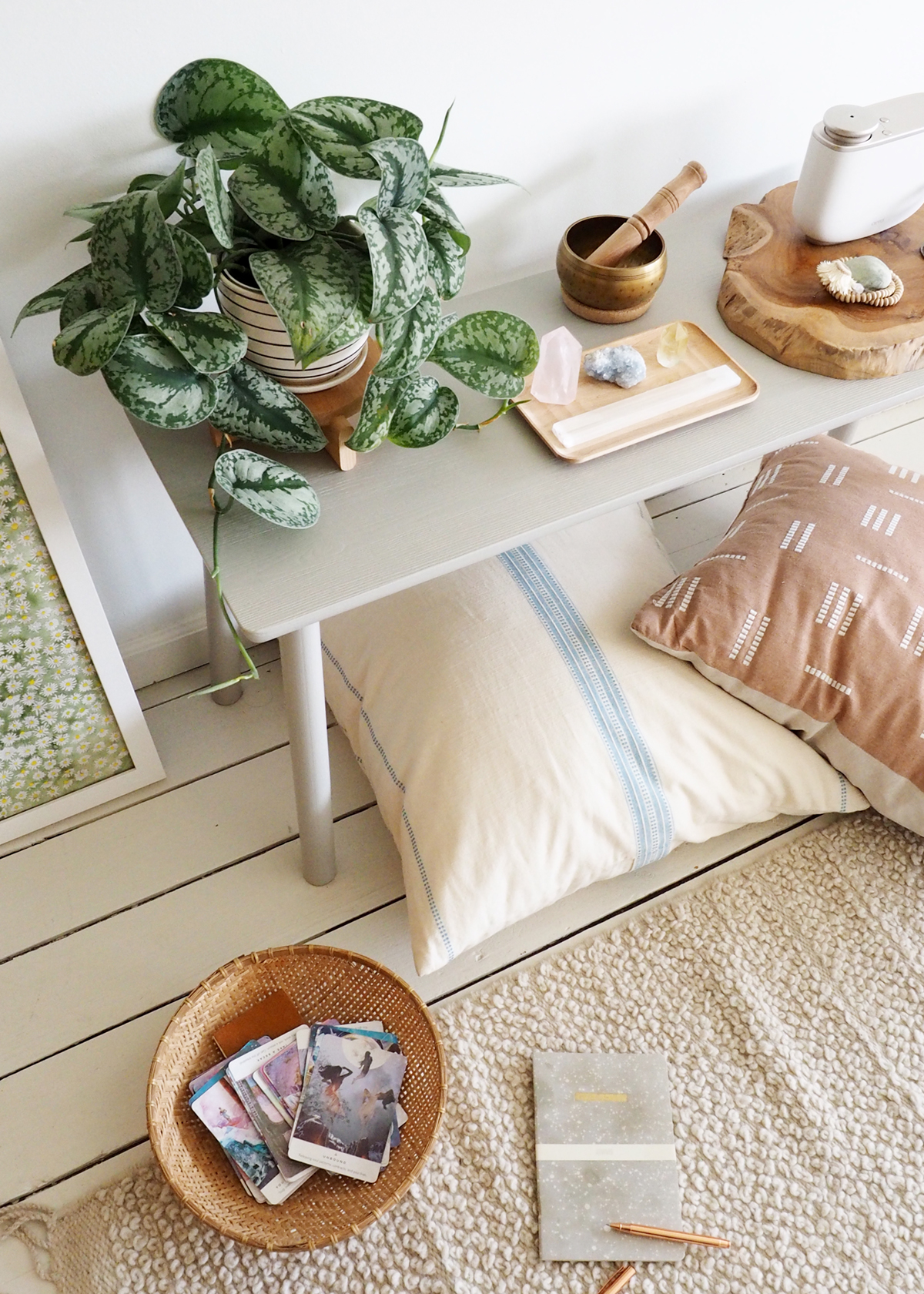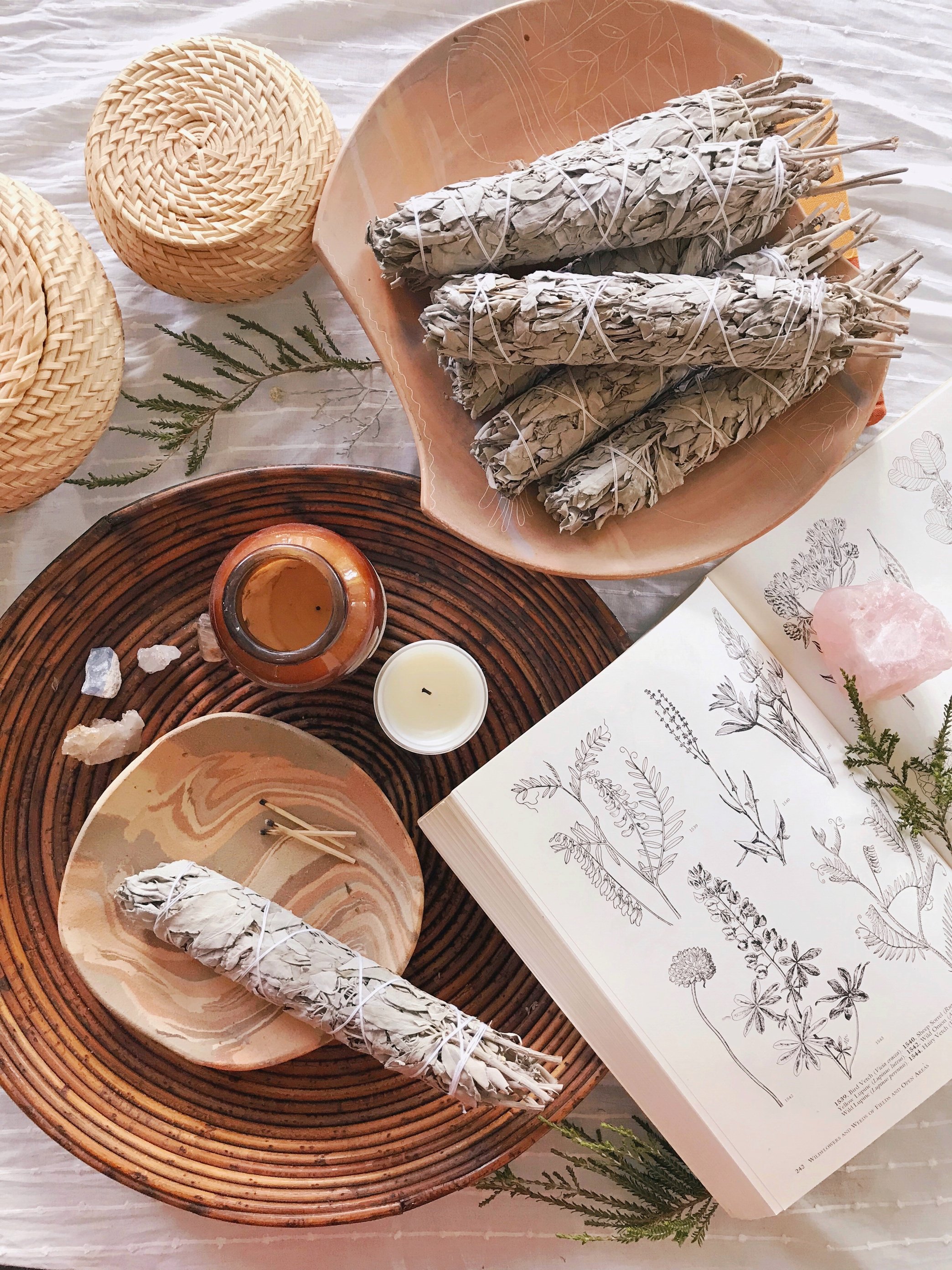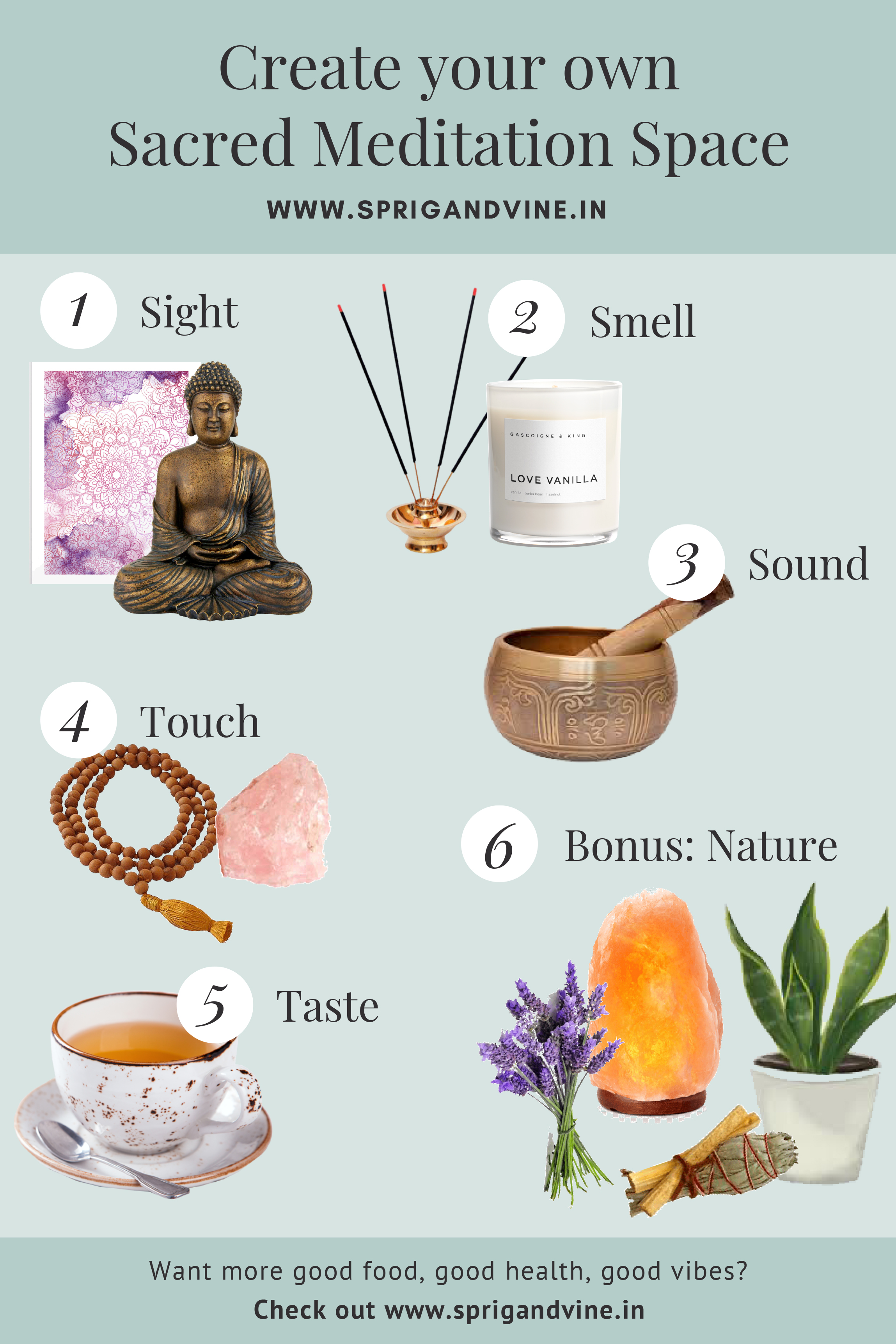
The act of meditating comes with so many benefits: it can reduce stress and anxiety, keeps you calm, improves focus and productivity, helps you deal with emotions and feelings, and is a grounding exercise that allows you to reconnect with yourself. In fact, some studies show that regular mindfulness and meditation practice may even boost immunity and improve brain function.
While all of this sounds amazing and potentially life-changing, incorporating meditation into your daily routine is slightly daunting — specially if you’re someone who has a hard time focusing or staying still. As with anything new, it takes consistency to build a habit, but starting small can help. Instead of trying to tackle a 20-min meditation sesh right at the onset, put aside 5 or 10 minutes daily to meditate. Gradually increase or decrease that duration based on what works for you and your schedule.
Another way in which you can motivate yourself is by creating a dedicated meditation space in your home. While your home is already your sanctuary to rest and rejuvenate, having that special peaceful corner to reflect will make easier to turn meditation from a lofty goal to a daily practice.
Here are some of our tips for how you can create a sacred meditation space that is dreamy and peaceful, and will actually make you want to practice it daily:
1. Choose with care
When choosing that special spot you want to devote to your practice, make sure you choose it with care. It should be private, and secure, and somewhere you’ll be free from disturbances. Consider the lighting — you may want it near a big window or balcony with tons of natural light, perhaps you prefer a cozy corner in your room lit up with candles, or you want to head to your garden and create a zen space amidst nature. Also keep in mind the quietness of the space as that will be a big factor in helping you concentrate.
That being said, don’t let space constraint be an excuse. Not everyone needs a dedicated meditation room or a zen garden — sometimes a corner, a nook — heck, even a bathtub can function as your meditation space.
2. Keep it simple
Keep your space simple except for the few items that help you meditate. Some basics that will help with your practice are a mat, a meditation pillow, maybe a rug. You want to be comfortable, not busy. Choose a peaceful color scheme — you don’t want busy prints and patterns to distract you and make you feel restless. Whether it’s art, a blanket, a meditation cushion, or whatever else you add to your space, choose colours that evoke feelings of calm in you — muted pastels are always a good idea.
It’s also recommended to have a few props that bring you peace and serenity to help you meditate (more on that later), but apart from those, keep your corner clutter-free. Arrange those props on a tray, shelf, or altar.
3. Personalise with sacred items
To make your meditation space more peaceful, personal, and tranquil, bring a few items that add meaning to and enhance your practice. Whether that’s just a meditation cushion you want to sit in silence on, a meaningful book you want to read, angel/tarot cards, or even music you want to listen to. Just like your practice is personal to your needs, your meditation space will be the same.

A good way to choose these sacred items of meaning is to have something for all of the senses, plus something from nature:
Sight: You could have a prayer or meditation statue, some calming art and imagery, or even ornaments. Indoor plants also are wonderful for creating a sanctuary-like feeling.
Smell: Smell has a powerful effect on the mind, and burning incense for meditation practice is traditional. If not incense, a diffuser/oil burner or scented candles are also wonderful. Alternatively, you can also burn sage or palo santo.
Sound: Soothing music helps you foster that sense of calm and sets the tone for your practice. Try a calming meditation playlist. Alternatively, you can keep the technology out and instead use bells, chimes, or a Tibetan sound bowl. You can also have a tiny fountain, as sounds of water gently trickling can instantly foster tranquility.
Touch: This could be textural, for example your mat, cushion, or rug; or something to hold — a touchstone, or prayer beads, also called a Mala. You could even have beautiful crystals if that’s what you resonate with.
Taste: A glass of water, or a warming cup of soothing tea to sip on either before beginning your practice or once you finish.
Finally, add a touch of nature
It’s great to have something from nature as part of your meditation zone, as that adds balance to your space. Whether it’s plants, sage, crystals, a Himalayan salt lamp, a bowl of water, rocks, shells from the beach, your favourite fresh flowers, or whatever else brings you joy and you find beautiful in nature.
There are no rules to creating your sacred meditation space — these are all ideas to help you get started, but you can do whatever that brings you joy. All that matters is it should be an oasis where you can relax and be alone at peace; somewhere you can recharge your energy and stay balanced.

Photo Sources: CocoKelley.com






